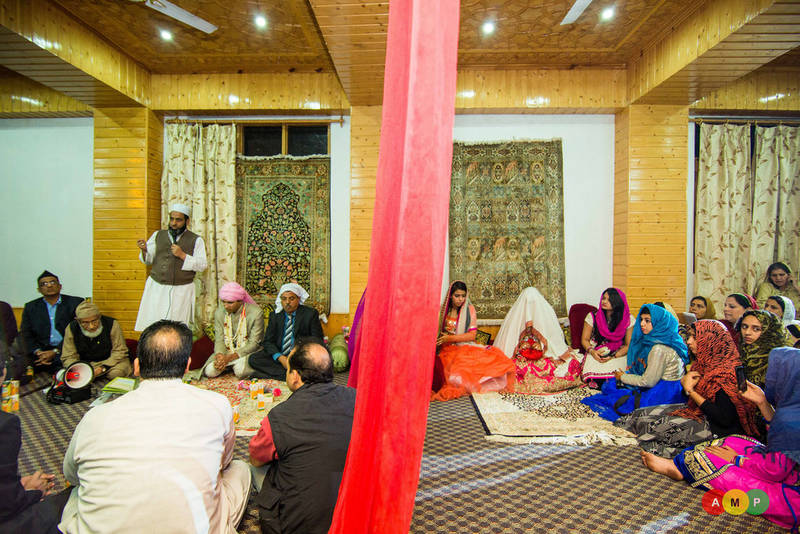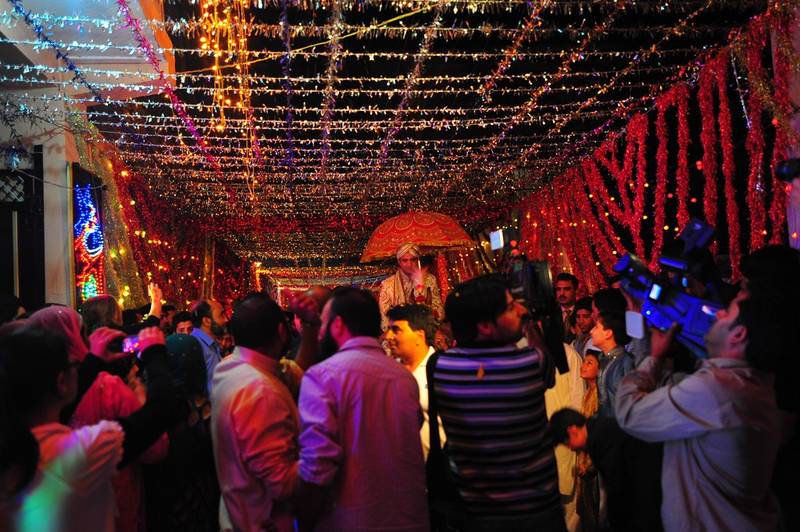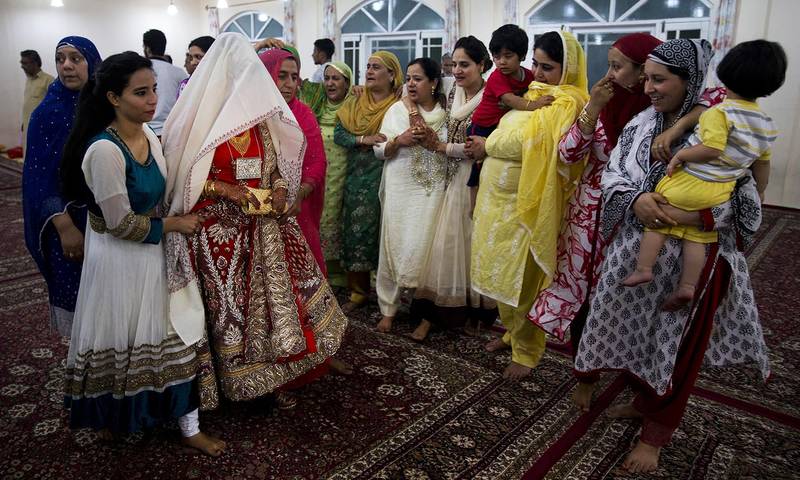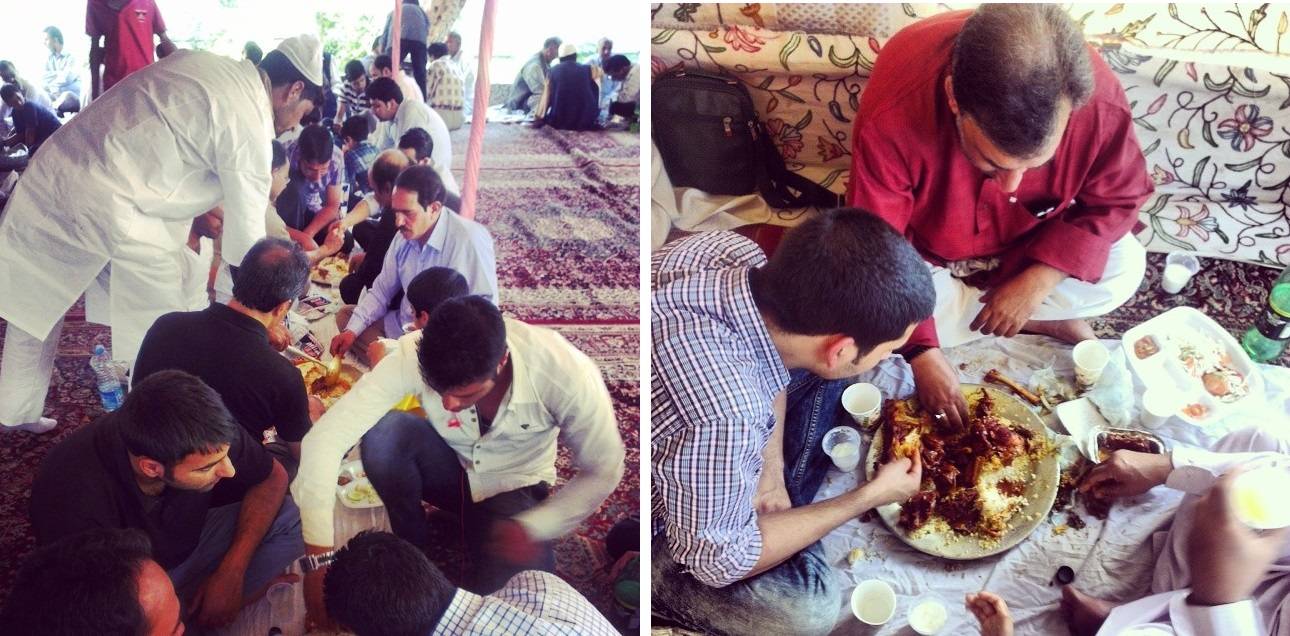Kashmiri Hindu Pandit Weddings: Customs, rituals and preparations
- October 17, 2022
- kashmiri
We are More or less aware of Kashmir’s mesmerizing landscape wedding venues, and as… Read More
Weddings are no less than festivals. We always say weddings are a matter of celebration. But Kashmiri Muslim Weddings are way above that. It is a rather experience one must get in his life. It is rich in culture and filled with rituals. The Kashmiri weddings are quite intriguing and sophisticated. The fun and the entertainment make the perfect and cheerful ambiance.
Now, to organize a wedding, your first and foremost thing to do is to decide on the venue of the wedding and book a slot according to the date and availability. Here is a list of where you can find the dandiest wedding halls of all destination weddings in Jammu & Kashmir–
Manzimyor is a traditional Kashmiri word for matchmaker. The family of the Kashmiri bride or groom hires a professional Kashmiri matchmaker to help them find a suitable match for the girl or the boy.
The manzimyor then researches and matches horoscopes collects profiles and shares the most eligible ones with the family through a process called Parche Traavun. Now, the family decides if they like the match and then selects the match according to the compatibility. The families also do some background checks before proceeding further. The interested families talk to each other and decide to move forward if everything goes well.
Once both families are satisfied, they see the bride or the groom. They organize a meeting at a restaurant or astaans(shrines). The marriage is only finalized after the ‘vichni gasun’. The consent of both the bride and groom is also taken into consideration.
Once both families approve the marriage, the groom’s family adorns the bride with a piece of heavy gold jewellery, and Edward stamped coins, usually called Poend. This marks the officialization of marriage. After that, majmas (a large copper plate) filled with sweets and dry fruits are sent to all the relatives to announce the wedding.
Nishayn is a formal engagement where Nikah is read embarking on the legalization of marriage. The bride’s family mostly organises it, and both families invite their close ones, such as relatives and friends. The couples are loaded with gifts, and the guests are treated to traditional Kashmiri cuisine and sweets called Wazwan.
After Nishayn, the Kashmiri Muslim bride and groom can see each other or date officially.
After Nishayn, the wedding dates are finalized, and a grand get-together called Saatnaam is organised at the respective places for the bride and the groom. The family invites their relatives and friends and announces the wedding dates to the invitees. The celebration is further enlightened by traditional folk dance, wanwun (Kashmiri songs) and tasty Kashmiri treats. The couples are showered with blessings in Saatnaam.
A few months before the wedding, quintals of rice are bought, and female family members sit together to clean the impurities from the rice.
Here comes the main celebration of the Indian wedding rituals, Malmaenz. In this tradition, the elder woman of the bride’s family applies oil to the bride’s hair, does tiny fancy braids and wraps them with colourful ribbons. Later, haldi is applied to the bride. These women sing the famous Kashmiri songs, and they are allowed to undo these braids one by one. This tradition is called ‘Mas Traavun’.

The bride’s hands and feet are adorned with intricate henna (mehendi) designs. The female members of the family also apply henna on their hands. The groom also applies a bit of henna, and the groom’s little finger is wrapped with a 500 or 2000 rupee note, which is a good omen.
The traditional wedding songs are sung non-stop throughout the night. The folk dance contributes to making the ambience even more cheerful. And the bride is blessed with all the love and care. The maenzraat is a fun package you celebrate with your friends, sisters, cousins and relatives. The bride and the groom are gifted with jewellery, personal care products, etc., by the guests.
Check this also Jewish Wedding Rituals

On the morning of the wedding day, the Kashmiri bride baths and cleanses herself for the beginning of a new phase in her life. After that, she wears her traditional Kashmiri bridal dress. She also recites verses from the Quran and offers two rakaths of namaz.
Check this also Iyengar Wedding Rituals
The Kashmiri Muslim bride and groom wear breathtaking attire on their wedding day. Their attire showcases the simplicity of their culture, which further adds beauty to the marriage.
The bride usually wears a heavily embroidered pheran with intriguing designs. A pheran is a salwar kameez which looks jazzy with traditional woven work and embroidery. A turban or headwear known as Kasaba is tied on the head. Kasaba is available in different colours and is held tight on the bride’s head with silver pins and trinkets. It is adorned with gold embroidery and silver pendants hanging on the forehead. She wears a trim less called gurabi. Further adding to the bride’s beauty, she wears heavy silver jewellery. The jewellery includes heavy packs of earrings upheld by a thick chain, necklace, bracelets and payals around her ankles. This gives a stunning look to the Kashmiri Muslim bride.
On the other hand, the Kashmiri Muslim groom wears a pheran (similar to a kurta) with a heavily embellished broad belt around his waist. His head is adorned with a Muslim cap on his wedding day, embarking on his devotion towards his religion.
The wedding attire of the bride and groom plays a quite remarkable role on the wedding day. Their elegant look increases the pride of the celebration.
Check this also Kerala Wedding Rituals

Nikah is the wedding day when the bride and groom tie the knot and welcome each other into their lives. The wedding hall is embellished with lights and flowers, vibing the auspicious day. With all the preparations done, the dignity of the hall is further enhanced by the arrival of the gorgeous bride & handsome groom.
Nikah can be performed in both- Asaalatan, i.e., In the presence of the couple nearby and Wakalatan, i.e., In the presence of the witnesses. The Qazi (priest) recites the verses from the Quran and prays for the long happiness & prosperity of the newlywed couple. Everyone congratulates the couple on the new beginning.
Check this also Kannada Wedding Rituals
On the day of Yini Wol, close ones are invited to treat themselves to the Kashmiri Wazwan lavish feast. Everyone blesses the couple for a long, happy married life.

The baraatis i.e., the groom and his relatives and friends arrive at the decided venue and the various Kashmiri delicacies are served on the fancy copper plates. The groom sits on the Masnand– a platform of fine silk carpet. This magnificent feast is known as Mahraaz Saal.
Check this also Hindu Wedding Rituals

After the feast is served, the bride finally bids farewell to her family and leaves for her Waeriv (in-laws).
This is a fun ritual on the groom’s side. After Ruksati, when the groom is on his way to take her bride home, his friends block the way and stop the vehicle. They do not let them pass until they receive money from the groom, Kadal-e-taar.
After the couple reaches their house, her mother-in-law happily welcomes the bride. In the honour of the bride, a goat is slaughtered. The mother lifts the bride’s Muhar Tullun (veil) and blesses her. The relatives gathered offer gifts to her and the crowd sings traditional wedding songs to welcome her.
Check this also Baniya /Agarwal wedding rituals

Walima is the grand feast or reception organized by the groom’s family. They invite their friends, relatives, colleagues and neighbours to enjoy the feast and bless them for the new beginning in their life.
Check this also Christian Wedding Rituals
In the following days, the bride’s relatives, except her parents, offer visits to the bride’s new house and load her gifts.
After all these rituals, a few days later, the bride’s family invites their daughter, son-in-law, and relatives for a meal and gives them the royal treatment.
Now the couple returns to their new home. The next seven days after the wedding are celebrated. In those seven days, the bride wears the seven different colours and is not prohibited from regular household work. On the Satim Doh i.e. the seventh day, the bride’s family are invited to the feast at the groom’s house.
At the end of the function, the bride takes permission from her husband and in-laws to go live with her parents for a few days.
Check this also Jain Wedding Rituals
Phirraa Khaber marks the end of the wedding celebrations. After the bride returns to her new house, her relatives pay visits to her just to know if she is going well in her new life. This is known as Phirraa Khaber.
Also, read about Kashmiri Hindu Wedding Customs.